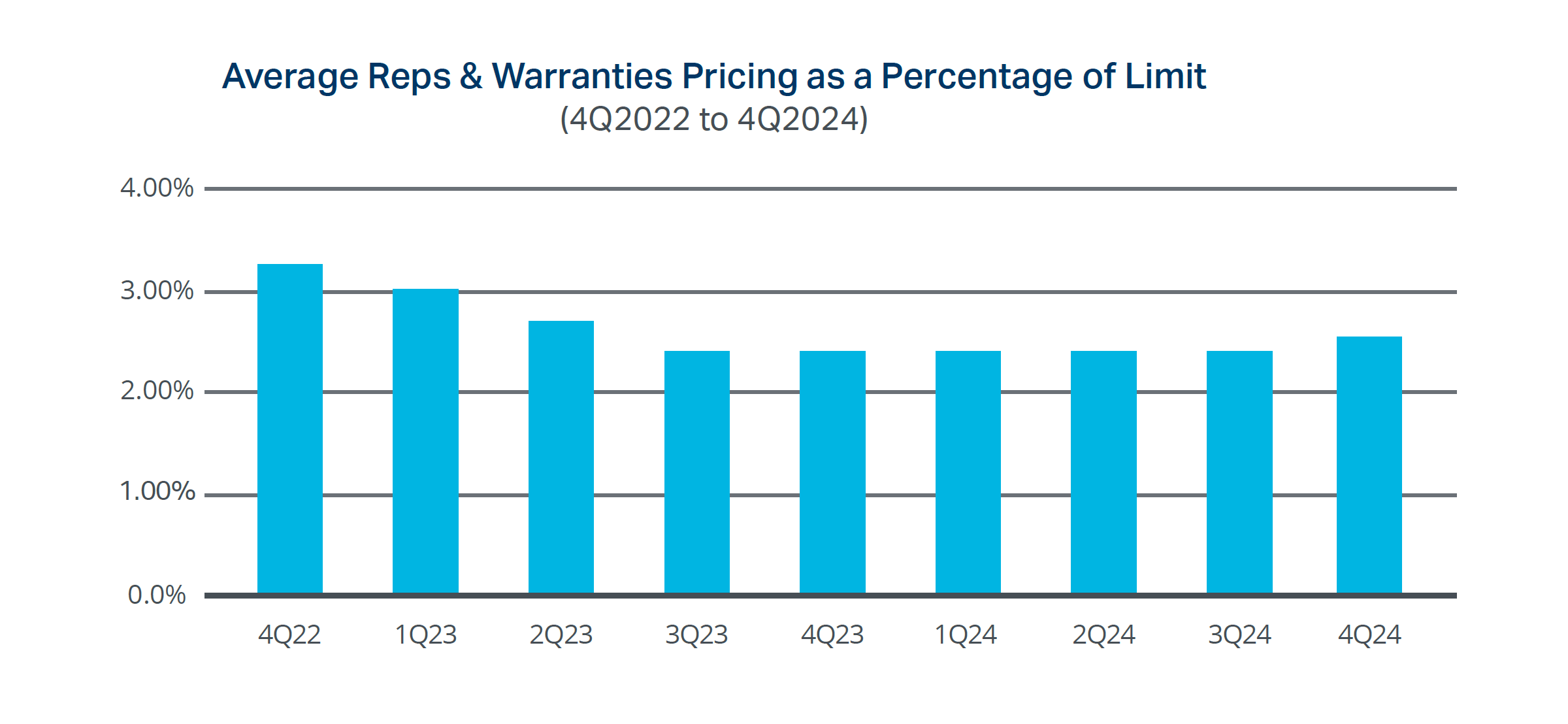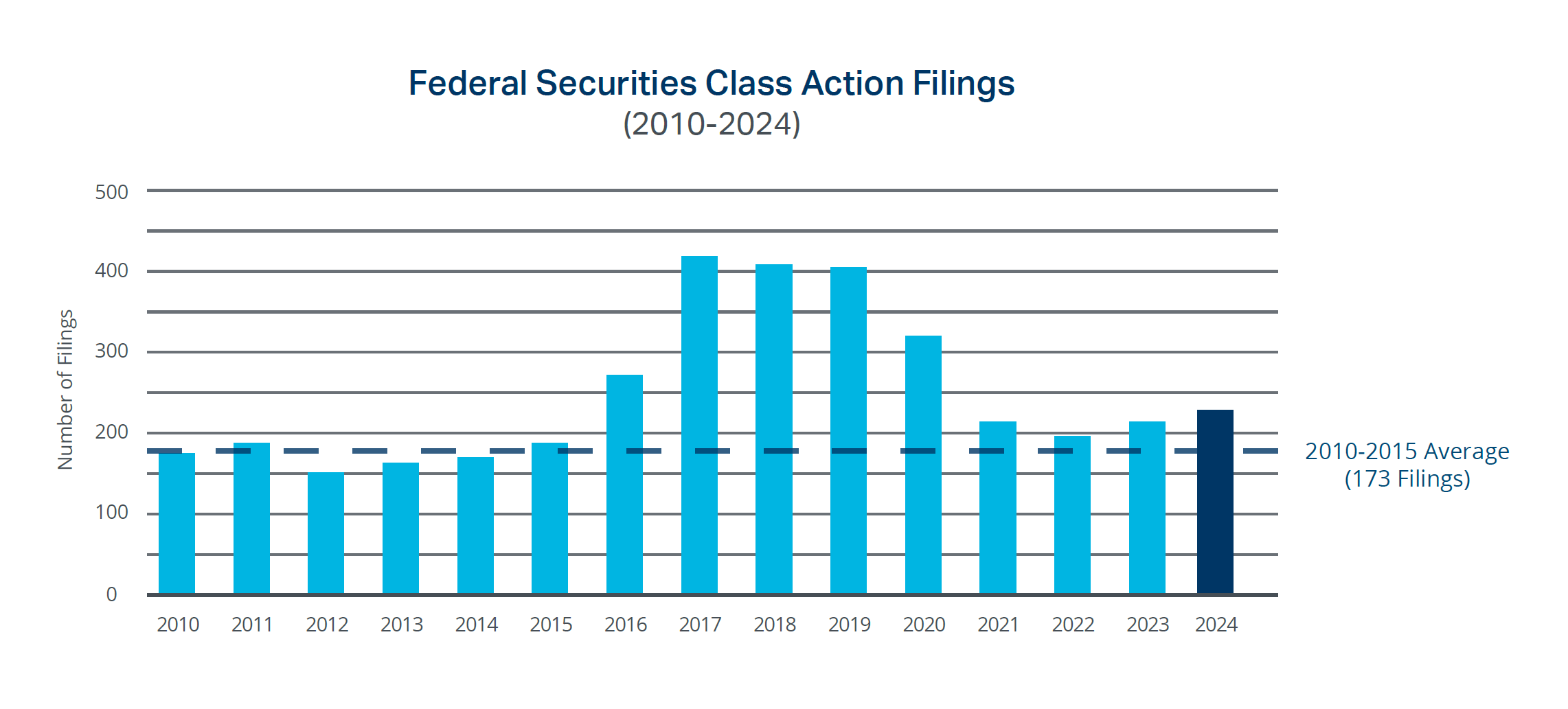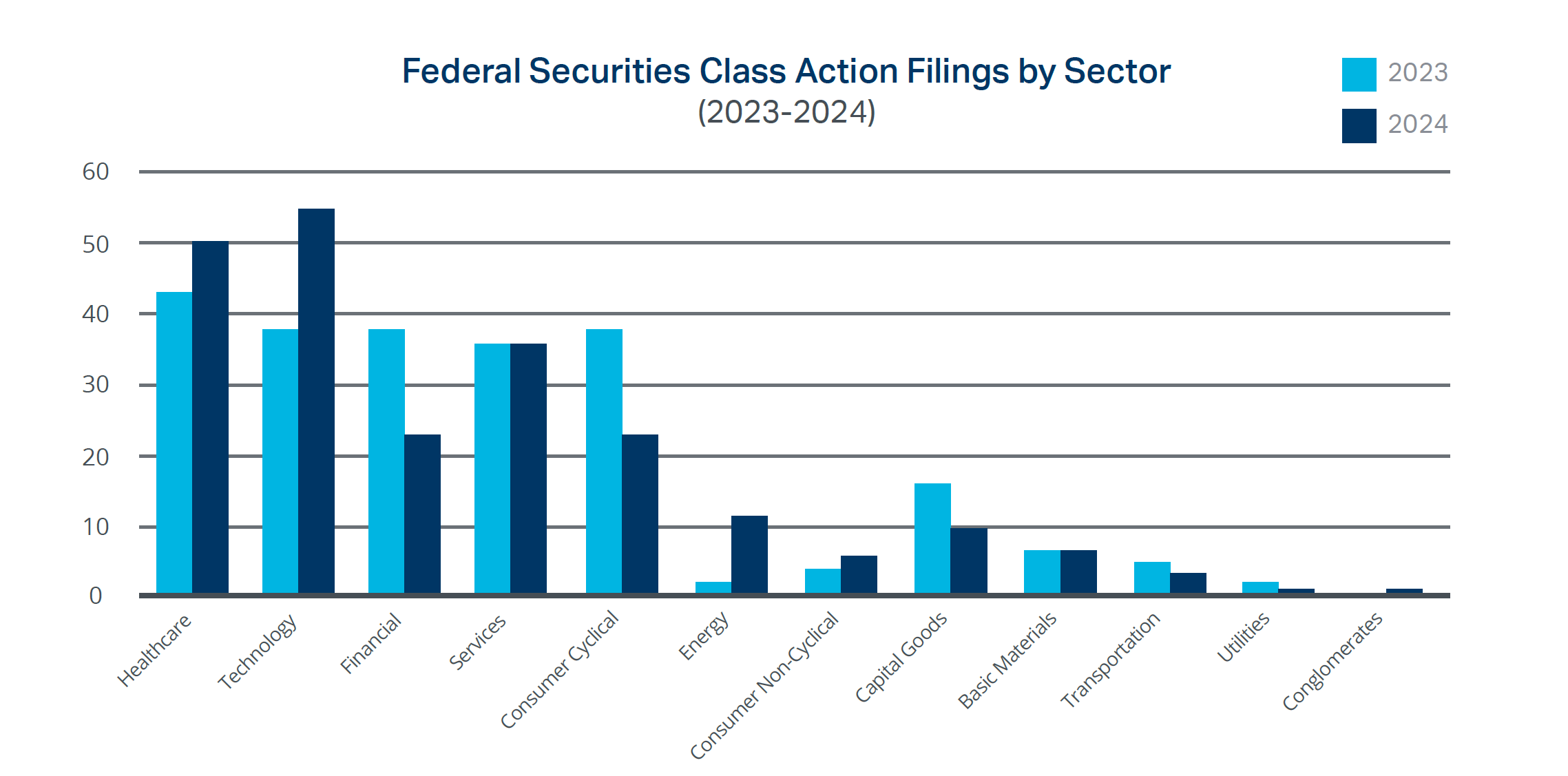Executive Risk SolutionsQuarterly Update | January 2025
Feb 4, 2025
Following a lengthy investigation by the Securities and Exchange Commission (SEC) that culminated in a nonprosecution agreement against the insured entity and a suit being filed against three individuals, numerous excess D&O insurers attempted to deny coverage for defense costs that exceeded $145 million. The insurers responsible for the first $85 million in coverage paid their limits, while the final four carriers on the tower balked. The U.S. District Court for the District of Columbia held that the excess insurers cannot avoid their obligations by arguing that underlying coverage was improperly eroded.
In November 2007, a securities class action was filed against the insured entity and several employees. Eleven other civil suits were filed over the following four years. The SEC opened its investigation in the fall of 2008 and began issuing subpoenas to employees. In March of 2011, Wells Notices were issued to the insured company and three employees informing them that an enforcement proceeding had been recommended. As noted above, a non-prosecution agreement was reached for the company, while suit was filed against three employees for violation of securities laws.
The fifth excess insurer on the tower paid $7.3 million of its $15 million policy limit, but refused to acknowledge coverage for costs incurred while the SEC investigation was ongoing.
The remaining excess insurers similarly refused coverage, arguing that the costs were incurred on behalf of the company, while coverage only existed for investigations of individuals. This coverage litigation was filed against the remaining excess insurers over the remaining $33.6 million in defense costs incurred. The insureds settled with the fifth and sixth excess insurers and moved for judgment on the pleadings against the remaining two.
The policy language at the heart of the dispute dealt with coverage for investigations of individuals versus the company. “The parties agree that, under the policy’s definition of Securities Claim, costs associated with an investigation of [the insured] entity are covered only if [an insured] employee is also being investigated at the same time.” Without the actual subpoenas to review, the Court determined it would allow discovery to proceed on that matter. With respect to the excess insurers’ attempt to challenge payment of underlying limits as being outside the scope of coverage, the Court found in favor of the insured. “[E]xcess insurers cannot avoid their obligations by arguing that underlying coverage was improperly eroded… [A]llowing higher-level excess carriers to challenge these payments would encourage litigation, delay the resolution of claims, and undermine the discretion of lower-layer carriers to settle claims within their limits.” Federal Home Loan Mortgage Corp. v. Twin City Fire Insurance Co., et. al., 2024 WL 4722148 (D.C. November 8, 2024).
After an insured received a subpoena in conjunction with multi-district litigation involving aqueous film forming foam (AFFF), it sought coverage for legal costs incurred in producing relevant documents. The insured company was not a defendant in the litigation, but sought to invoke coverage under its professional liability policy and confirm its costs would erode the self-insured retention under the policy.
In response, the insurer denied coverage, taking the position that the subpoena did not meet the definition of “Claim” in the relevant policies. The policy defined a Claim as “a demand received by an Insured seeking a remedy and alleging liability or responsibility on the part of the Named Insured for loss.” Coverage litigation was initiated by the insurer following the denial of coverage. The insureds argued that being labeled as a distributor of AFFF in the subpoena meant claimants in the multi-district litigation automatically deemed them to be liable for distribution of AFFF. The Court disagreed, holding that “[t]he identification of [the insured]as a “DISTRIBUTOR” in the Subpoena is not an allegation of liability or responsibility under the ordinary meaning of ‘allegation’…The information the Subpoena requests from [the insured] may bring about a future allegation of liability or responsibility, but the Subpoena does not itself make that allegation… The Subpoena is ultimately merely a third-party subpoena in a civil dispute.”
The Court went into a lengthy analysis of caselaw addressing when a subpoena alone may trigger coverage under a liability policy. In doing so, it reveals the varying ways insurers define what constitutes a “Claim” and what is required to trigger coverage. The Court distinguished policies that merely required “a demand for something due or believed to be due” from the policy at issue which required an allegation of liability. It found the insureds were seeking to rely on cases where a claim was defined to include “a demand for non-monetary relief,” which differs markedly from what the policy in this case required. The Court further distinguished subpoenas issued in civil cases from a grand jury subpoena in a criminal matter, which are not merely requests for information. The takeaway here is that some liability policies require an allegation of liability in the definition of Claim, while others may not. Understanding exactly what an insurance policy requires to trigger coverage is why it is crucial to focus on each and every word in the policy. Steadfast Insurance Co. v. Shambaugh & Son, L.P., 2024 WL 4188459 (D. Conn. September 13, 2024).
Similar to the case summarized above, this one provides yet another example of how important each and ever word in a liability policy can be. This case involved coverage under a medical entity professional liability policy issued to a medical practice. The insured was sued by a former patient who had become paralyzed from the waist down following surgery performed by doctors at the practice. A defense was provided by the insurer; however, coverage litigation was filed to determine the extent of their coverage obligations.
Applying New York law, the Court rejected the insurer’s attempt at having the policy rescinded. “The Court finds that [the insurer] has waived its rescission claims based on information omitted from the Applications.” By failing to inquire further about the information allegedly omitted in the application, the insurer waived its right to rescind the policy after the fact. The Court also rejected the insurer’s attempt to rely on the prior knowledge exclusion, and even found the insurer’s characterization of the exclusion to be incorrect. “The plain language of Exclusion 3.O, however, covers known or reasonably know Claims, not known or reasonably known facts and circumstances from which a Claim could arise.
While characterized as a ‘prior knowledge exclusion’, Exclusion 3.O contains significantly narrower language than other prior knowledge provisions.” The Court went on to cite numerous cases with much broader exclusionary language, thereby distinguishing the language in this policy from cases the insurer sought to rely on. “The language of Exclusion 3.O is unambiguous and is triggered only by a Claim made or brought against [the insured] that they knew or reasonably should have known about prior to the effective dates of the Policies.” Because a “Claim” was not brought against the insured before policy inception, the insurer was not permitted to deny coverage. Again, the importance of engaging a skilled broker focused on narrowing the scope of all exclusionary clauses cannot be emphasized enough. Integris Risk Retention Group v. Capital Region Orthopaedics Associates, PC, 2024 WL 4347791 (N.D.N.Y. September 30, 2024).
A recent decision out of the Southern District of New York reveals another avenue of attack being utilized by the plaintiff’s bar against special purpose acquisition companies (SPACs). In conjunction with the formation of the SPAC at issue here, warrants were issued under a Warrant Agreement, the obligations of which were assumed by the surviving company following the de-SPAC transaction. The warrants in question entitled the holder to purchase one share of the surviving entity’s stock at $11.50, subject to certain conditions. The two conditions at the heart of this dispute required that a registration statement under the Securities Act covering the issuance of the common stock underlying the warrants be effective and that a prospectus relating thereto be current.
On November 10, 2021, Black Rifle Coffee (BRC) filed an S-4 registration statement to register stock and warrants in advance of its de-SPAC transaction. The S-4 included a prospectus, and proxy statement related to the proposed business combination. The SEC declared the amended S-4, prospectus and proxy statement effective on January 13, 2022. Shareholders approved the business combination on February 3, 2022, and the transaction closed on February 9, 2022. Trading of shares commenced on the following day. Shortly thereafter, investors began purchasing BRC warrants. On March 11, 2022, attempts to exercise the warrants to purchase shares were rejected by the issuer.
BRC and its counsel took the position that without an effective S-1, it would violate SEC rules and securities laws to permit exercise of the warrants. Lawyers for investors and BRC went back and forth on their interpretations of the applicable rules and regulations. It wasn’t until May 4, 2022, the day after the warrants ceased trading on the NYSE and one hour before expiration of the redemption period that the SEC declared the S-1 effective. As such, 99% of warrants were exchanged on a cashless basis at a redemption price of $0.10 each.
Warrant holders brought suit even before the close of the redemption period, seeking damages arising out of the delay in ability to exercise the warrants. It’s worth noting that this case followed the path of another SPAC which was found liable for approximately $87 million in 2023 for refusal to permit exercise of its warrants. The facts of that case were somewhat less convoluted but squarely dealt with the issue of when the warrants became exercisable. In both cases, the court found in favor of the investors and found the issuers to have violated the applicable Warrant Agreements. We highlight this case as a reminder that even seasoned securities lawyers can get things wrong in highly complex transactions. Having topnotch D&O coverage in place before, during, and after any complex business transaction can and should be the first line of defense. Tang Capital Partners, LP v. BRC Inc., 2024 WL 4716315 (S.D.N.Y. November 8, 2024).



Brian R. Bovasso
EVP & Managing Director
IMA Executive Risk Solutions
303.615.7449
brian.bovasso@imacorp.com
Travis T. Murtha
Director of ERS Claims
IMA Executive Risk Solutions
Legal & Claims Practice
303.615.7587
travis.murtha@imacorp.com
Justin M. Leinwand
Product Leader
IMA Executive Risk Solutions
303.615.7773
justin.leinwand@imacorp.com
Daniel Posnick
Transactional Liability Leader
IMA Executive Risk Solutions
303.615.7747
daniel.posnick@imacorp.com